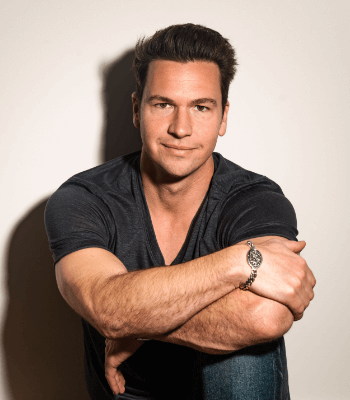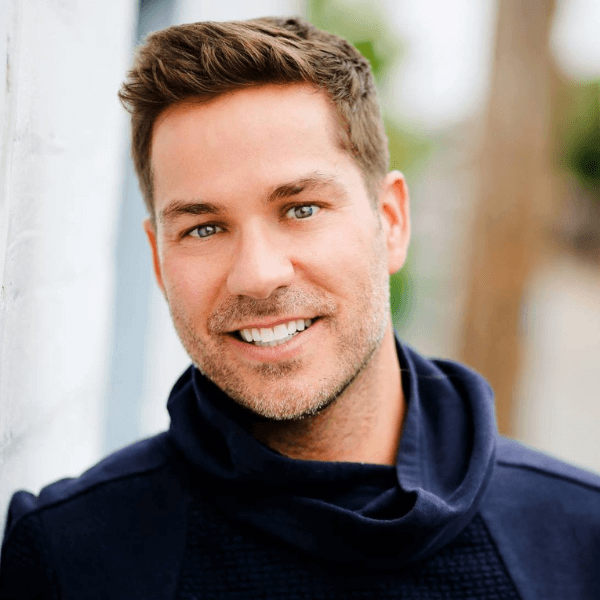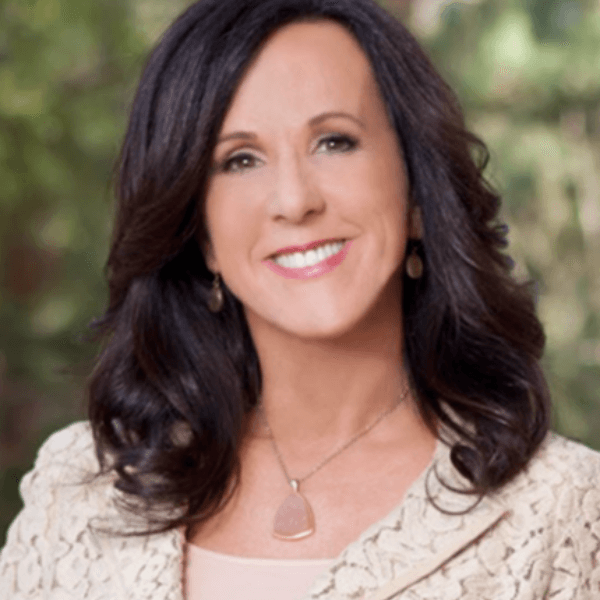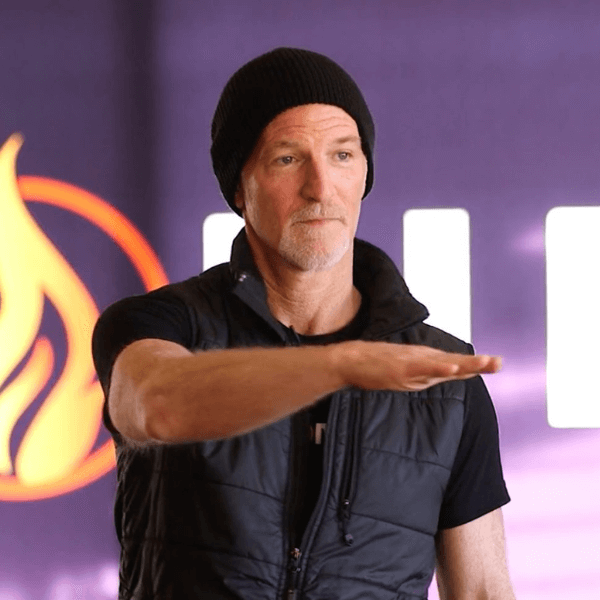How To Master A Stage Presentation And Become An Effective Speaker

As a speaker and coach, I’ve learned that success begins with mastering stage presentation. The moment you do, there’s no limit to your engagement with your audience or the topics you can talk about. You can effectively deliver the message you want to share and you can provide the transformation your audience members are looking for. What stage presentation skills do you need to be an effective speaker? Read on to find out!
Master Your Stage Presentation and Become an Expert Speaker Today
In This Article:
- Have Many Topics Ready
- Let Your Audience Know What Your Stage Presentation Is About
- Talk to Your Audience Members
- Create an Agreement
- Talk About a Problem
- Share The Opportunities
- Present the Opportunities
- Describe Your Pit
- Your Story Should Be Related to Your Product
- After the Pit, Have Your Results
- Share a Case Story
- Break Down Your Topic
- Make Your Offer
1. Have Many Topics Ready
Before you master my stage presentation tips, have an actual topic. When you get booked on a stage, you need to be clear about what your topic is, but don’t pick only one. I recommend having three or more because you need to have a list of interesting presentation topics. Practice until you feel most confident about your topics.
I remember the time I got booked on Marcia Wieder’s stage. Back then, she had 12 other A-listers who were going to speak.
To get booked, I asked Marcia, “Hey, how many people would I need to put into your seminar room to get booked on your stage?”
She said she’ll think about it, and then later she asked me, “Well, what would you speak about? Which topic?” I gave her one topic and she said, “Somebody is speaking about it already.” I got the same response when I gave her a second one. I had to come up with a third topic before she agreed, “Oh, it might work.”
When it comes to topics, consider those which are within your area of expertise. There’s no sense at all to talk about finance when your expertise is health and wellness. You don’t want to get booked for a multi-speaker event only to find out your topic is already taken.
2. Let Your Audience Know What Your Stage Presentation Is About
After knowing your stage presentation topics, it’s time to get up onstage. Now, what will you say first? One of the very first things you have to tell your audience is your purpose. Why are you presenting up there? Give them a solid presentation introduction. Make use of audio-visual aids like a powerpoint presentation. Make your slides informative while making it easy to understand. Having an iPad as your guide may help you be as organized as possible.
My formula for this is, “Today, I’m going to talk about how to do this so you can have this.” In other words, I’ll be teaching the solutions to their problems and help them achieve their goals.
When sharing your purpose, you need to lay out specific steps. For example: “Today, I’m going to talk about the five steps to spread your life story and message to millions, so you get paid to make a difference.” It’s clear, it’s specific, and your audience knows what they’ll get during your event or seminar.
3. Talk to Your Audience Members
Establish a connection with your audience. Don’t wait until you’re in the middle of telling your life story to do this. You can start early by telling them for whom the topic is.
From the start, I try to get to know my audience, so I ask a basic question. I begin with, “Today, I’m going to talk about the five steps to spread your life story and message to millions, so you get paid to make an impact and have a lifestyle-friendly business.”
Then I ask, “How many people in the audience are entrepreneurs?” or “How many of you are financial advisers?” or “How many audience members are coaches?” You get the idea. During this part of the stage presentation, hands will go up then I’ll know who’s in the audience and whom I’m speaking to.
Also at that moment, what happens is, they’re connecting with me and I’m actually connecting with them. I’ll also have a clearer idea of the content of my talk. If the majority of my audience are business coaches, I discuss business coaching.
It’s also an effective presentation technique since it keeps the audience present. Once they raise their hands, they get the feeling of, “Oh, he’s going to talk about me, so I’d better listen. His teaching may be helpful.”
4. Create an Agreement
What does the agreement mean? If you want to enroll your audience into your program, you need to hold their attention. This means 100% physical and mental presence.
Every time you ask a question and hands go up, you create an agreement with the people in the room, and you can improve your connection more by maintaining eye contact. Most importantly, when you speak to your audience, look them in the eye.
The fact they don’t know your background yet doesn’t matter. They know you because they’re connecting with you. They’re answering your questions and you’re having a conversation. It’s a relationship. In the end, your audience will say, “I’m in the right place.”
5. Talk About a Problem
Now that you have a connection and a shared a reality, let’s talk about the problem. Any stage presentation which doesn’t discuss a problem and its solution is incomplete. In fact, it’s not useful. Because, after all, people come to your sales presentations because they’re looking for results. A favorite technique of mine is to combine the problem with an agreement.
I say this: “I’ve noticed something in coaches, service-based businesses, and health practitioners. They want to share their expertise with the world but a lot of times they discount their value, so they’re not getting paid according to their worth. How many of you have ever experienced that?”
With this statement, I’m actually having a conversation with my audience. I’m expressing the problem so they can confront it and say, “Yeah, I’m facing this problem.”
Here’s another example: “How many of you realized you’re trading a lot of time for too little dollars and you want a more intelligent model that can cater to your lifestyle?”
Do you see what I’m doing? I’m talking to them about their problems! I’m hitting their pain point. Through this process, you create both an agreement and a reality for your audience.
6. Share The Opportunities
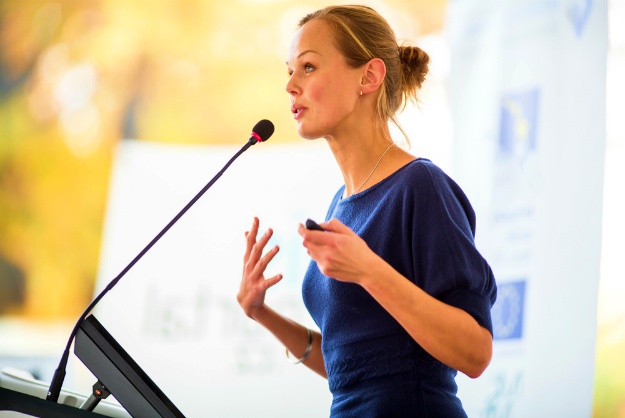
You can’t keep your audience in their problems. In fact, you have to get them out and the way to do it is to include opportunities.
So here’s what I tell them: “Most of you may be in a place where you’re trading time for dollars and you’re not getting paid for what you’re worth. You feel like you’re trapped and you tell yourself, ‘I want a better lifestyle so I became an entrepreneur. To begin with, I want more freedom.'”
You might not realize the impact you want to make. It may be one of the reasons why you’re here — to make an impact and find yourself.
7. Present the Opportunities
There’s never been a greater opportunity than today to get your message out to the world. Through technology and the Internet, you can get your message out to millions of people. With the right processes and systems, you’ll have clarity on what your value is. In return, you’ll get paid more.
With the right strategies, you can free up your time, so you’re not trading it for dollars. You have more intelligent ways to get paid, such as group coaching, speaking from the stage, or creating online products. You can sell the knowledge and advice you work so hard to gain. How many of you want opportunities like that?
Notice what I did? I took the problem and I turned it into an opportunity. All through this process, I’m creating an agreement, talking about problems and opportunities, and I’m delivering something here where they’re ready for the content. They know they’re in the right room and they’re thirsting for the opportunity.
In their minds, the audience is thinking, “How does this work?”
8. Describe Your Pit
I will then transition to the next step, which is my personal story. Why? Because I’ve shared the problem and the opportunity. We’re now connected, and we share the same reality.
To introduce my personal story, I usually start off with, “Let me share with you how I built my lifestyle-friendly business…”
Now, I’m going to give you tips on how to share your story during a stage presentation. Your story should have two parts. The first is a pit moment which creates vulnerability. It’s the season of your life when a big challenge weighed you down, and you didn’t think you could overcome it.
You broke through the challenge and found the answers. You searched and picked up solutions along the way. Then one day, you had a breakthrough. The breakthrough is the moment of realization.
9. Your Story Should Be Related to Your Product
Here’s the key: your story should be related to your product. This is the product you’re going to sell at the end of your speech. If I’m presenting to a group of speakers, I share the breakthrough of when I booked my first stage or the breakthrough of when I did my first seminar.
This is the pit moment I share with my audience: “I overdosed on drugs and alcohol to the point where I felt my soul coming out of my body and I almost died. It happened right after I cracked a six-figure income in the insurance business. But the truth is, it wasn’t about the money for me. I only wanted my boss’s approval and it was a time of searching for me. After the incident, I told myself, ‘Well, the money didn’t do it but maybe if I become a partner in this company, my life will change.'”
For five straight years, I worked my ass off to become a partner and then I did it — I became a partner. In fact, I was number five out of the 500 partners in the company. Upon getting the news, I asked myself again, “Is this all there is to my life?” That same day, I resigned.
Notice what I’m doing here. I took them into the pit of how I went after money but money never gave me fulfillment, then I searched and I became a partner to gain status and fame.
Again, I went on a search to become an entrepreneur. I launched a couple of businesses which failed because I wasn’t passionate about them, then I lost my house, my money, and most of my life.
It was then when I started to have a breakthrough: “Well, those didn’t work. What am I going to do now? I want to help other people.” So I became a coach, and now, here I am.
I also share my breakthrough moment when I had my first client. This happened when I presented to speakers at my first seminar. The breakthrough I highlight is either my first seminar or my first client because it’s what my audience wants.
10. After the Pit, Have Your Results
The second part of your personal story is the result. You tell your audience the problem and the big opportunity, but your life story cements it into a real person. The problem and opportunity you spoke of are now about you–the real person going on the journey.
The big problems are the pit and the search for answers but not getting them. The breakthroughs are the results and outcome. It’s also the big opportunity, so a pit equals a problem. A breakthrough moment gets a result. You want your audience to say, “I can do this.” You want them to have a real experience.
As a speaker, I have a recommendation for you. When you give a 90-minute stage presentation, spend 10 to 15 minutes of it for your personal story, but tell a great story to captivate an audience.
11. Share a Case Story
An interesting topic for a sales presentation is a case story. This is about your client getting results with your help. So why do I do this? First, people can still be very hard to convince. Even after you’ve provided a pit and breakthrough with your personal story. They say, “Well, you could do it. I can’t.”
And second, I need something to help me relate to my audience. I can’t talk about a man’s perspective all the time when I have female participants.
I share some case stories during my public speaking engagements. Each one is around 90 seconds to two minutes long. I tell my audience a bit about my client’s journey, such as their struggle and results. So afterward, they can say to themselves, “Wow, this person did it. I can do it too.”
As I mentioned earlier, right at the beginning I get to know my audience. This becomes useful once I share case stories because I usually tell stories relevant to the majority of my audience.
12. Break Down Your Topic
Find your story. #unique #inspiration #guide #success #business #tips #TedMcGrathhttps://t.co/8Ng9iGUFi3 pic.twitter.com/M5b4wcfrpo
— Ted McGrath (@ted_mcgrath) February 24, 2018
After sharing some stories, it’s time to go deeper into your stage presentation, which is your content. My technique is easy and straightforward: divide your topic into steps. You can have it in five or seven steps.
Don’t make them long because you want your audience to remember them. I use this strategy when I’m designing my coaching program. In short, my program provides a solution and a result.
To gain the result, I have, say, five steps. Each of these steps may have three modules with at least two videos each. That’s how simple it is. Some people hold back on what they want to share. They say, “Well, Ted, what if I give them my best stuff? Are they still going to want to work with me even after I give them my best stuff?”
The answer is yes. Your consistency in your material is what will create certainty. It will breed confidence and results. If somebody hears a talk only once, it won’t guarantee them amazing results.
Give them great stuff. Your content should be the longest part of your stage presentation. Usually, for a 60-minute seminar, the content is about 40 to 45 minutes. You can also spread case stories throughout the content to break it up. These will make your steps more real and relevant.
13. Make Your Offer
Now let’s talk about the transition into the offer. You’ve delivered great content and the audience loves it, but how do you move on to your offer?
Let me share with you how I do it. I start it off with, “I can teach you about this all day but unfortunately, we’re running out of time. So if you want to know the remaining six steps, pay attention. If you want a deep-dive on what I’m teaching, you should come to my live event. Right now, I want to invite you to my live event.”
See what I did there? I made a smooth transition into the offer with “the remaining steps.” Sometimes it can be awkward to go into an offer when you don’t know how to make the transition but if I were you, this is exactly how I’d do it.

Watch this video for the 10 steps to master your stage presentation and successfully book clients:
That’s it for my tips on how to give a killer stage presentation. What I want you to do now is to start writing your topics. Look for interesting topics for oral presentation. Break them down into steps then start designing your personal story. Don’t forget to add some case stories between the content. Follow these tips to get the results you want and have an effective presentation.
Do you have tips for mastering stage presentations? I’d love to hear about them in the comments section below!
Up Next: 15 Effective Public Speaking Tips to Boost Your Confidence
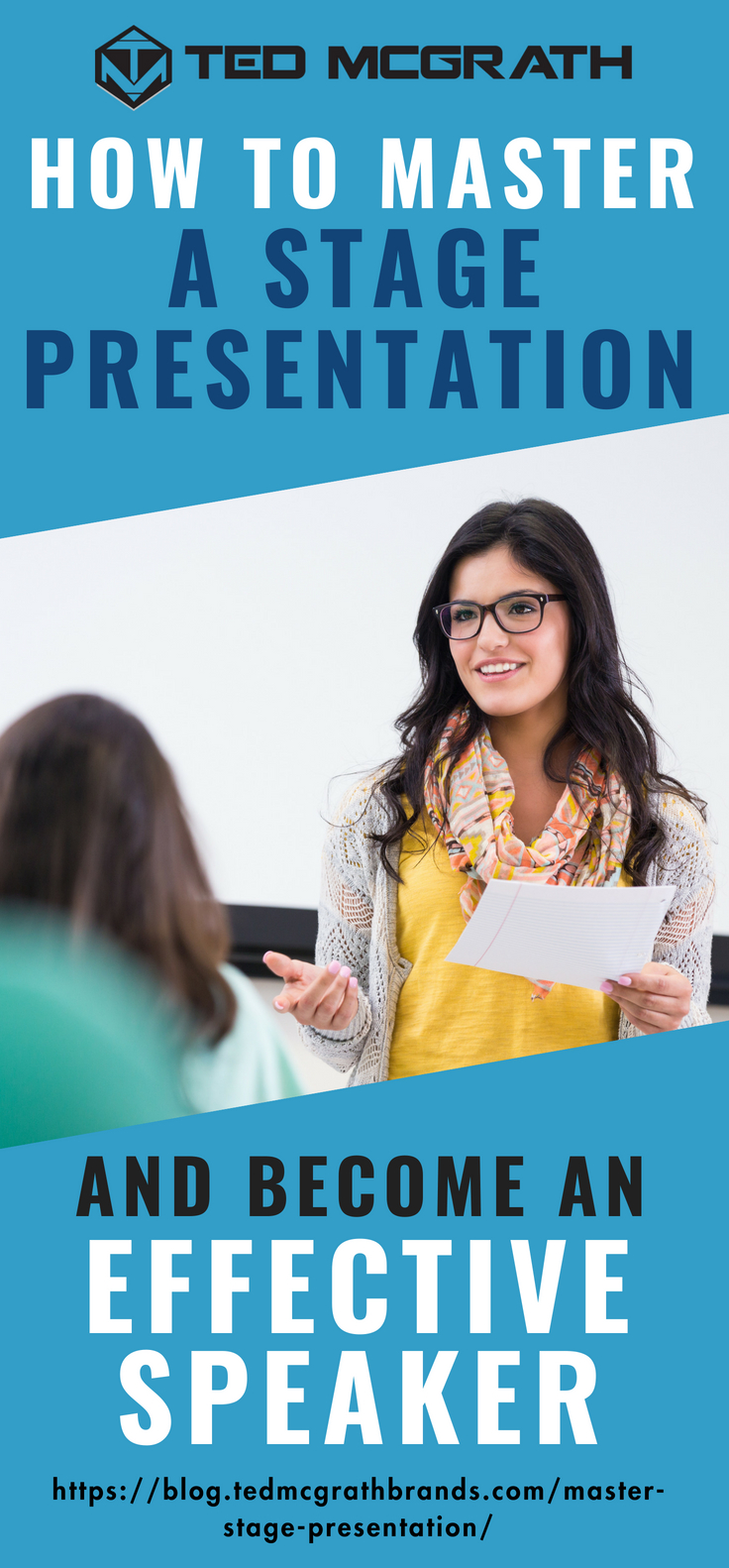
Editor’s Note: This post was originally published on January 2, 2018, and has been updated for quality and relevancy.
ABOUT THE AUTHOR
